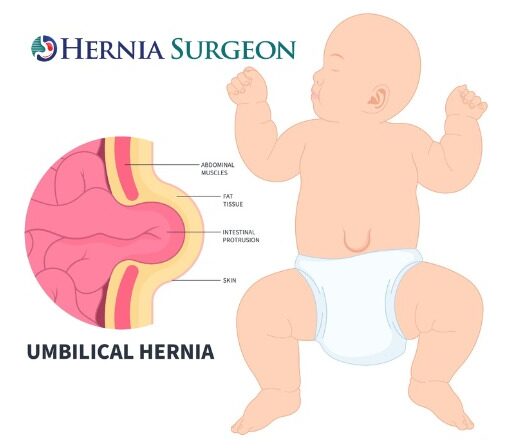10 Questions to Ask During Your Hernia Surgery Consultation in Singapore
Discover when hernia is considered dangerous, the various hernia types...

Hernia is a common medical condition that can occur in many parts of the body. However, it is most commonly found in the abdominal region, particularly in children. A hernia is caused when the body experiences an abnormality in a particular region, causing the tissue to bulge out of its normal position.
There are various types of hernias that can occur in children, but Inguinal and Umbilical hernias are the two most common types. In this blog post, we will discuss the causes, symptoms, and treatment options of these two types of hernias, along with essential details that every parent must know about them.
Inguinal hernias occur when the tissue bulges through a weakened area in the lower abdomen. This type of hernia is more common in boys than in girls, and it usually affects premature babies. Inguinal hernias can be congenital, meaning the defect is present at birth, or they can occur later in life.
Describe the symptoms of inguinal hernia in children in point form:
Treatment for inguinal hernias usually involves surgery to repair the weakened area in the abdominal wall. However, sometimes, the hernia can go away on its own, so doctors may wait to observe the condition before deciding whether surgery is necessary.
Umbilical hernias occur when there is a protrusion of tissue through the abdominal wall around the navel. This type of hernia is more common in newborns, premature babies, but it can occur in adults as well.
Symptoms of umbilical hernia include:
Treatment for umbilical hernias usually includes observation, and the condition may go away on its own as the baby grows. However, if the hernia does not disappear on its own, surgery may be required to repair the hernia.
There are some preventive measures that can be taken to reduce the risk of hernias in children, such as:
While inguinal and umbilical hernias are common types of hernias that can occur in children, with proper treatment and preventive measures, they can be easily managed. Early detection is key, and it is essential to consult a doctor immediately if your child is experiencing any of the symptoms mentioned above.
It is also crucial to remember that every child is unique, and these symptoms may differ from one child to another. Therefore, it is recommended to consult a hernia specialist if you notice any abnormality in your child’s body. By staying informed and taking necessary precautions, we can ensure that our children maintain optimal health and well-being.
Discover when hernia is considered dangerous, the various hernia types...
Discover when hernia is considered dangerous, the various hernia types...
Find out all you need to know about groin hernia...
Here at KYM Surgery, we believe in providing holistic & comprehensive medical care for all patients.
Here at KYM Surgery, we believe in providing holistic & comprehensive medical care for all patients.
Lower your chances of complications, see your doctor early and discuss your best treatment options.

We understand that hernias are worrying, but they can often be treated early. Here at KYM Surgery, we believe in providing holistic & comprehensive hernia care for all patients.
Hernia Surgery Clinic by KYM Surgery
Copyright © 2024 All rights reserved.